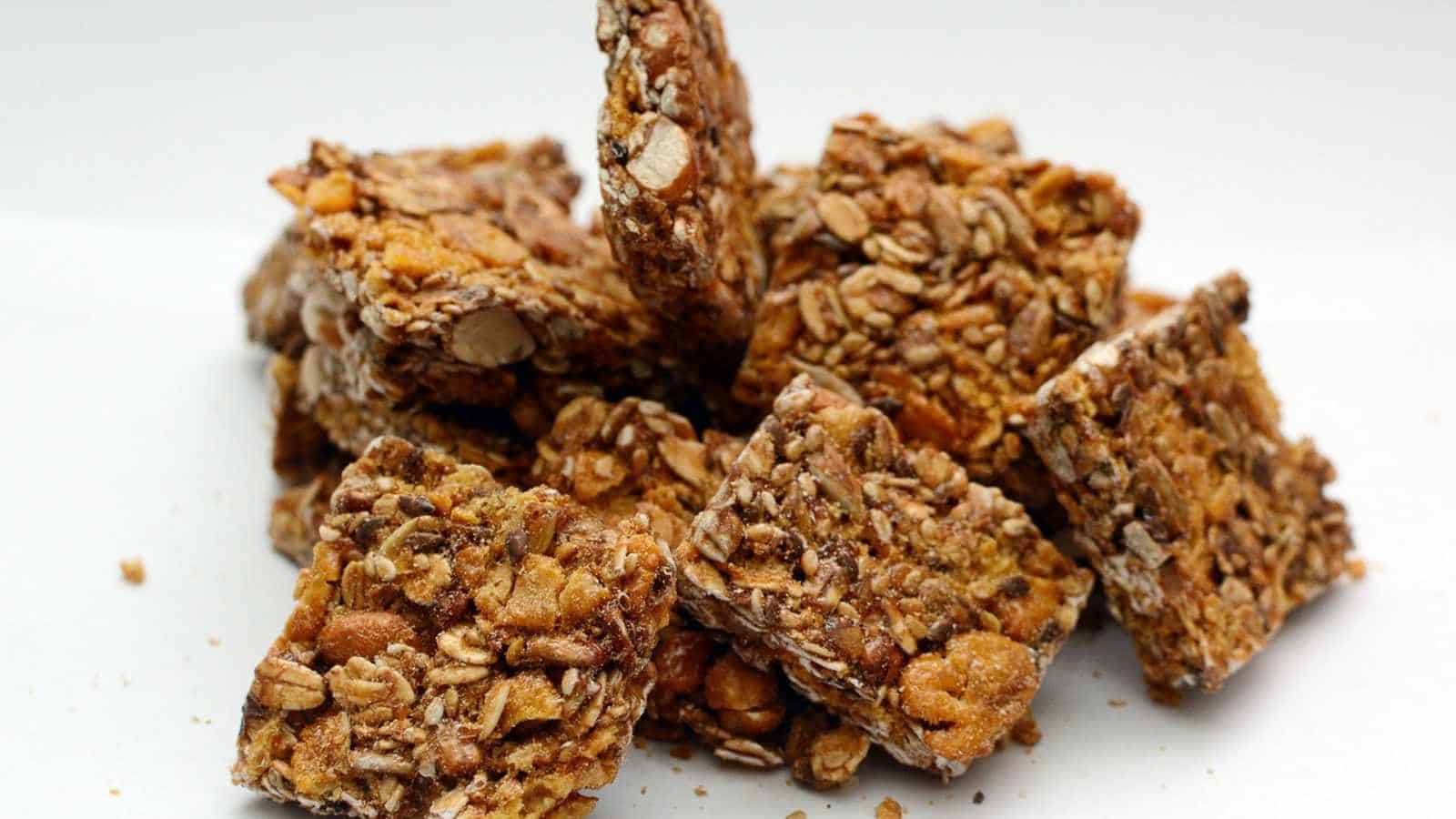12 Once-Loved Foods People Won’t Eat Anymore
Over the decades, what ends up on our plates has shifted drastically. Foods we once loved — snacks, convenience meals, processed staples — are increasingly being abandoned. A mix of health awareness, changing tastes, ingredient scrutiny, and cultural shifts now drives many to avoid foods that were once household staples.
A randomized trial published on PubMed found that participants who consumed ultra-processed foods—matched for calories and macronutrients with unprocessed meals—tended to eat an average of 813.5 extra calories per day. As a result, they gained an average of 1.1 kg more in just one week compared to when they ate unprocessed foods.
Tied to high UPF consumption, obesity, type 2 diabetes, cardiovascular disease, and premature death, many people are now re-evaluating once-common foods. Here are 12 foods or food categories that were once household or mass-market staples that are increasingly being avoided.
Sugary Breakfast Cereals

Sugary breakfast cereals were once marketed as a quick, convenient, and nutritious start to the day, often enriched with vitamins and minerals. Because many of these cereals are high in added sugar and refined grains, they fall under the UPF category. Frequent consumption of UPFs has been linked to a higher risk of type 2 diabetes.
In a 2024 cohort study, high intake of sugar- and artificially sweetened beverages, sugary snacks, and UPFs, including cereals, was associated with significantly higher incidence of diabetes (hazard ratio ≈ 1.13 for the highest vs the lowest quartile).
Many people are now replacing sugary cereals with whole-grain or minimally processed breakfasts.
White Bread & Refined-Flour Staples

White bread and other refined-flour staples were central to many daily diets due to affordability and long shelf life. However, refined grains lose much of their fiber and micronutrients during processing, reducing their nutritional value compared to whole grains.
According to IARC, diets high in UPFs, which often include refined-flour breads, are linked to increased risk of obesity and metabolic disorders over time.
As a result, many consumers have shifted toward whole-grain bread, whole-grain alternatives, or minimally processed grains, valuing fiber, nutrients, and slower-release carbohydrates.
Processed Snack Chips & Savoury Packaged Snacks

Packaged snack chips and savory snacks, including crisps, flavoured chips, and other packaged savoury treats, became staples of snacking culture. But as UPF evidence grew, these snacks came under scrutiny: they are often high in salt, unhealthy fats, and additives, and low in fiber or nutritional density.
The BMJ found high UPF consumption associated with a roughly 50% increased risk of cardiovascular-disease–related death, among other health harms.
With growing concern over heart health, sodium intake, and long-term diet quality, many people now avoid such processed snacks, opting instead for whole-food snacks like nuts, fruit, or minimally processed alternatives.
Sugary Sodas & Sweetened Beverages

Sugary sodas and sweetened drinks, once ubiquitous as refreshing, inexpensive beverages, are now recognized as major contributors to added sugar intake, weight gain, and metabolic disease.
Many health-conscious consumers are replacing sugary drinks with water, unsweetened teas, or natural beverages with no added sugar.
Ready-to-Eat / Frozen Meals & Instant Noodles

Convenient ready-to-eat meals, frozen dinners, and instant noodles were once celebrated as time-savers — especially for busy individuals. Such products are typically highly processed, often high in sodium, preservatives, and additives, and low in dietary fiber or micronutrients.
Because of the health risks associated with frequent UPF consumption, many people now prefer cooking from scratch using fresh ingredients, even if it requires more time.
Packaged Baked Goods & Mass-Produced Pastries

Packaged cookies, mass-produced cakes, pastries, and sweet baked goods were popular indulgences. But these items often combine refined flours, added sugars, trans fats or saturated fats, and preservatives, hallmarks of ultra-processed foods.
Frequent consumption of such UPFs is associated with elevated risk of heart disease, obesity, and other non-communicable diseases.
As consumer awareness about nutrition and long-term health grows, many are moving away from packaged baked goods toward homemade baking or fresh, whole-food snacks.
Processed Meats & Pre-packaged Meat Products

Processed meats such as sausages, luncheon meats, hot dogs, and other cured/meat-derived items have long been dietary staples in many regions due to their convenience and preservation. However, high intake of processed and ultra-processed meats has been linked to increased risk of chronic disease.
According to The Washington Post, UPF consumption has been associated with high intake, increased cardiovascular disease, cancer risk, and mortality.
People are reducing or eliminating processed meats and favoring lean and fresh meats, as well as vegetarian or plant-based proteins.
Fast-Food Burgers, Fries, and Typical Fast-Food Meals

Fast-food burgers, fries, and other fast-food staples combine multiple UPF elements: processed meats, refined carbs, high salt and fat content, and packaged or industrially prepared components.
As awareness of the long-term risks of frequent fast-food consumption grows, many individuals opt for home-prepared meals or healthier food outlets that emphasize fresh, minimally processed ingredients.
Sugary Breakfast Bars / “Low-Fat” Snack Bars & Ready Snacks

In previous decades, “low-fat” snack bars or breakfast bars (often marketed as healthy or convenient) became widespread. But many of these are ultra-processed — combining refined grains, added sugars, sweeteners, and preservatives — and may provide little nutritional benefit while contributing to overall excess caloric and sugar intake.
UPF consumption has flagged sugary snacks and “snack-type” UPFs (bars, desserts, packaged snacks) as contributing to higher rates of diabetes, obesity, and other conditions.
Health-conscious consumers now read ingredient labels more carefully or choose whole-food snacks (fruits, nuts, natural yogurt) instead.
Canned Fruit in Syrup / Sugary Canned Goods

Canned fruit cocktail or canned fruit preserved in heavy syrup, once considered a convenient way to get fruit, is now often avoided because of high added sugar and low fiber compared to fresh fruit.
Canned sweets and sugar-packed canned goods fall under the processed / ultra-processed category, which is associated with poorer health outcomes.
Many now prefer fresh fruit or frozen fruit without syrup to reduce added sugar, increase fiber intake, and maximize micronutrient intake.
Refined-Grain Pasta & White Rice (when consumed frequently, as a main staple)

Refined-grain pasta and white rice, especially when they form a large part of daily caloric intake, are nutritionally inferior to whole-grain alternatives. The processing removes bran and germ, which hold fiber, minerals, and other healthful components.
Reliance on refined grains is often part of diets characterized by high UPF intake, which has been associated with increased risk of obesity and related metabolic disorders.
Dietary guidelines and health-conscious eaters now recommend switching to whole-grain pasta, brown rice, or whole-grain alternatives for better fiber, slower digestion, and improved long-term health.
Mass-Produced Frozen Desserts / Pre-packaged Ice Cream & Sweet Treats

Pre-packaged ice creams, frozen desserts, and mass-produced sweet treats became popular for convenience and affordability. Like other UPFs, these products are often high in sugar, saturated fat, artificial flavors or stabilizers, and low in nutrients.
High cumulative consumption of such UPFs has been linked to increased risk of cardiovascular disease, obesity, and metabolic diseases.
Because of growing health awareness, many people are reducing their intake of frozen sugary desserts, opting instead for fresh fruit, homemade treats with minimal processed ingredients, or naturally sweet alternatives.
Key Takeaways

The decline in popularity of many once-common foods reflects a significant shift: from convenience and affordability toward health awareness, nutrition knowledge, and long-term wellness.
An increasing number of people are choosing fresh, minimally processed foods over past staples. This may be more than a passing trend — it may signify a lasting transformation of what we consider “normal” food.
Disclosure line: This article was developed with the assistance of AI and was subsequently reviewed, revised, and approved by our editorial team.
Why investing for retirement is so important for women (and how to do it)

Why investing for retirement is so important for women (and how to do it)
Retirement planning can be challenging, especially for women who face unique obstacles such as the wage gap, caregiving responsibilities, and a longer life expectancy. It’s essential for women to educate themselves on financial literacy and overcome the investing gap to achieve a comfortable and secure retirement. So, let’s talk about why investing for retirement is important for women and how to start on this journey towards financial freedom.
15 Foods From the ’60s Most Boomers Loved With a Passion

15 Foods From the ’60s Most Boomers Loved With a Passion
The 1960s were a time of significant social and cultural change in America. As the baby boomer generation came of age, they embraced new ideas, fashion trends, and music styles. And when it came to food, some beloved dishes defined this era.







